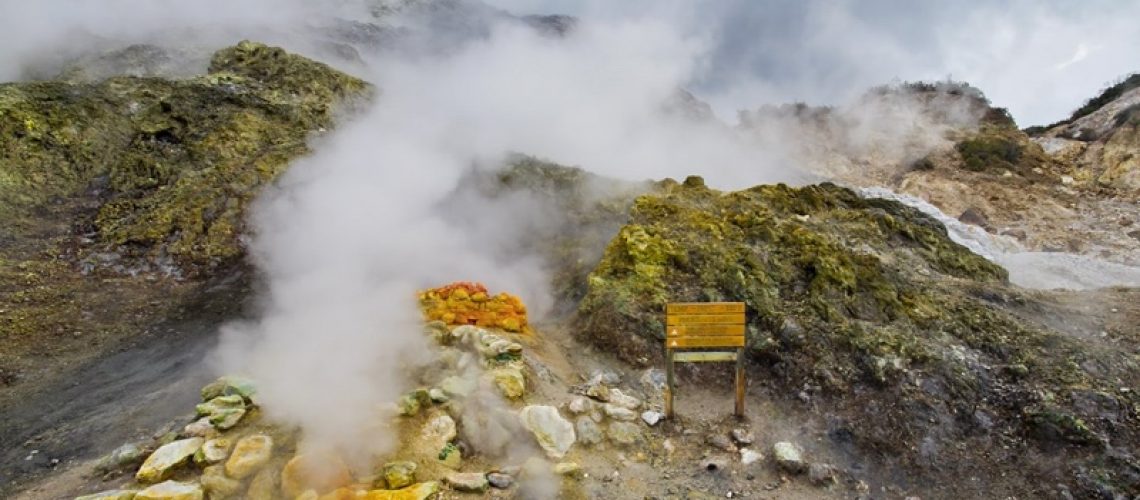Everybody knows Mount Vesuvius, the volcano in the Gulf of Naples which destroyed in AD 79 the Roman cities of Pompeii and Herculaneum.
Yet, not far from Naples, another smaller volcano attracts visitors from all over the world: it is the Solfatara, not far from Pozzuoli, in the Naples province.
Solfatara and the “Campi Flegrei” volcanic area
The Phlegraean Fields are a large volcanic area west of Naples and, since 2003, a regional natural park. The area comprises twenty-four volcanic sites, many of them underwater. While in Lucrino and Agnano the volcanic activity is limited to hydrothermal phenomena, the Solfatara is definitely an impressive site.
Solfatara: miniature Yellowstone or Iceland in Italy!
The Solfatara is currently a dormant volcano: the last eruption dates to 1198, nowadays the volcanic activity is limited to fumaroles and mud sulfurous ponds (the name Solfatara comes from Latin sulfur and terra, land of the sulfur).
If a visit to the Mount Vesuvius gives an idea of the dreadfulness and magnitude of the eruption which destroyed Pompeii, the Solfatara allows you to experience a volcano (even if a quiet one…) from within: the heat, the wheezing… and the smell of rotten eggs from the sulfur as well! 😉
Moreover, the Solfatara offers a unique landscape in which the hellish, bleak grounds of the volcano merge with the surrounding beauty of the Macchia Mediterranea, the Maquis Shrubland.
Last but not least, the Solfatara is only the icing on the richest Pozzuoli cake: Pozzuoli has the third biggest Roman amphitheater of the world, the Roman macellum (ancient market) and it is the starting point for a trip to the beautiful islands of the Gulf of Naples: Capri, Procida and Ischia.
To stay on the “volcanic trek”, of course you can visit the archeological sites of Pompeii and Herculaneum, the cities brought to us by the fury of the Vesuvius.

